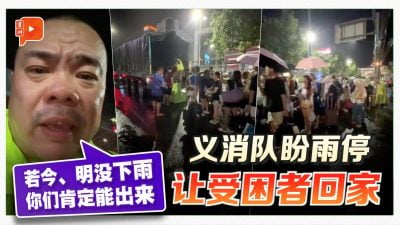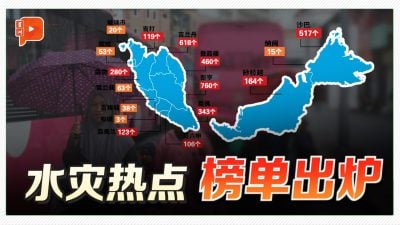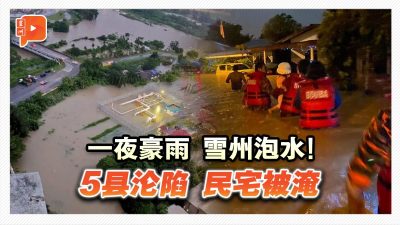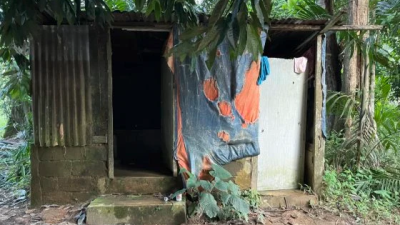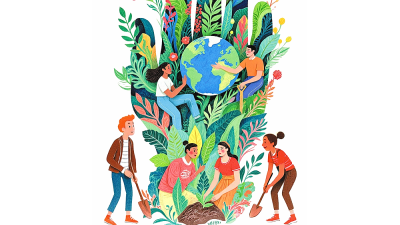
ALOR SETAR: About 500 Malaysians are evacuated from Hatyai as of this afternoon.
Raymond Leong, chairman of the Sungai Petani Volunteer Fire and Rescue unit, said the team rescued 186 Malaysian tourists on Monday and 300 at 3p, today.
Leong’s team had initially planned to reach Central Festival Mall in Hatyai at 10am but rising floodwaters, strong currents and severed roads temporarily halted the mission.
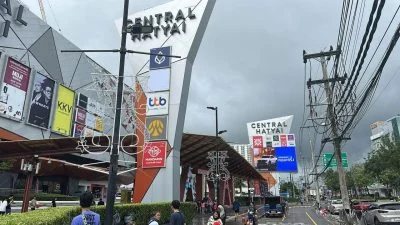
More than 1,000 Malaysians are believed to be stranded in Hatyai due to floods while eight rescue teams from Malaysia are in Danok and other parts of Songkla, working with local rescue teams.
Leong posted on Facebook that the teams were buying food from hypermarket in a live telecast to handover to local rescue teams.
Ongoing search and rescue operations had stopped due to rising flood waters.
Advised by the Thai rescue team, the Malaysian rescue teams were stationed at Danok as they were unfamiliar with the area and the water levels were high with strong currents.
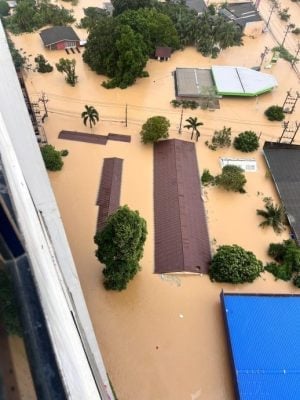
The Malaysian teams received many calls from Malaysians stranded in Hatyai but unable to help due to the rising waters which had cut off many roads leading to Hatyai.
One of the many calls that Leong received was a 90-year-old Malaysian asking for help as the caller was with two other senior citizens.
Leong explained that rising floodwaters made search-and-rescue operations increasingly difficult.
Many stranded individuals have lost contact with the outside world due to dead phone batteries and disrupted communication networks, leaving them desperately in need of aid.
He added that the rescue team itself is grappling with severe shortages of equipment and supplies—rescue boats have capsized, lorries’ engines have been damaged, and team members’ phones have stopped working, drastically limiting their operational capacity.
“Those trapped urgently need food, medical aid, and emergency evacuation. Although Thai rescue teams have stepped in to help, swift currents, harsh weather, and limited accessibility mean only a few people can be rescued at a time, he said.
Leong also noted that certain areas have been declared emergency zones, and rescue teams are prohibited from entering without official authorization, further complicating rescue efforts.
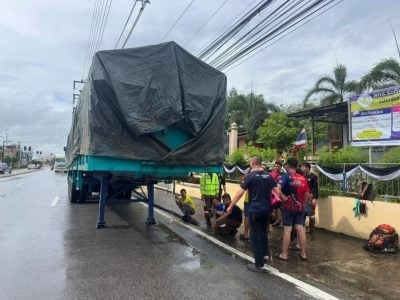
“Poor communication and a flood of distress messages are overwhelming us. We’re unable to respond to every plea or locate those who’ve gone missing again due to signal or power outages.”
Expressing deep regret and helplessness toward the stranded Malaysians, Leong emphasised that rescue personnel are doing everything humanly possible.
Another rescuer, Mohamad Amir, added that among the stranded are elderly people, children, pregnant women, infants, and individuals with chronic illnesses—one pregnant woman is on the verge of giving birth.
Clean drinking water and hygiene supplies are scarce, and several people have already developed skin infections and allergic reactions.
“Boats are capsizing, tow trucks are overloaded—it’s like evacuating people in a sardine can. Waterways are unpredictable, and vehicles can’t reach some areas at all,” he said.
He stressed the urgent need for more supplies, including food, medicine, clean water, as well as larger-capacity boats, tow trucks, and four-wheel-drive vehicles to facilitate evacuations.
The team also called on the government to provide immediate support to help Malaysian flood victims return home safely.
ADVERTISEMENT
ADVERTISEMENT






